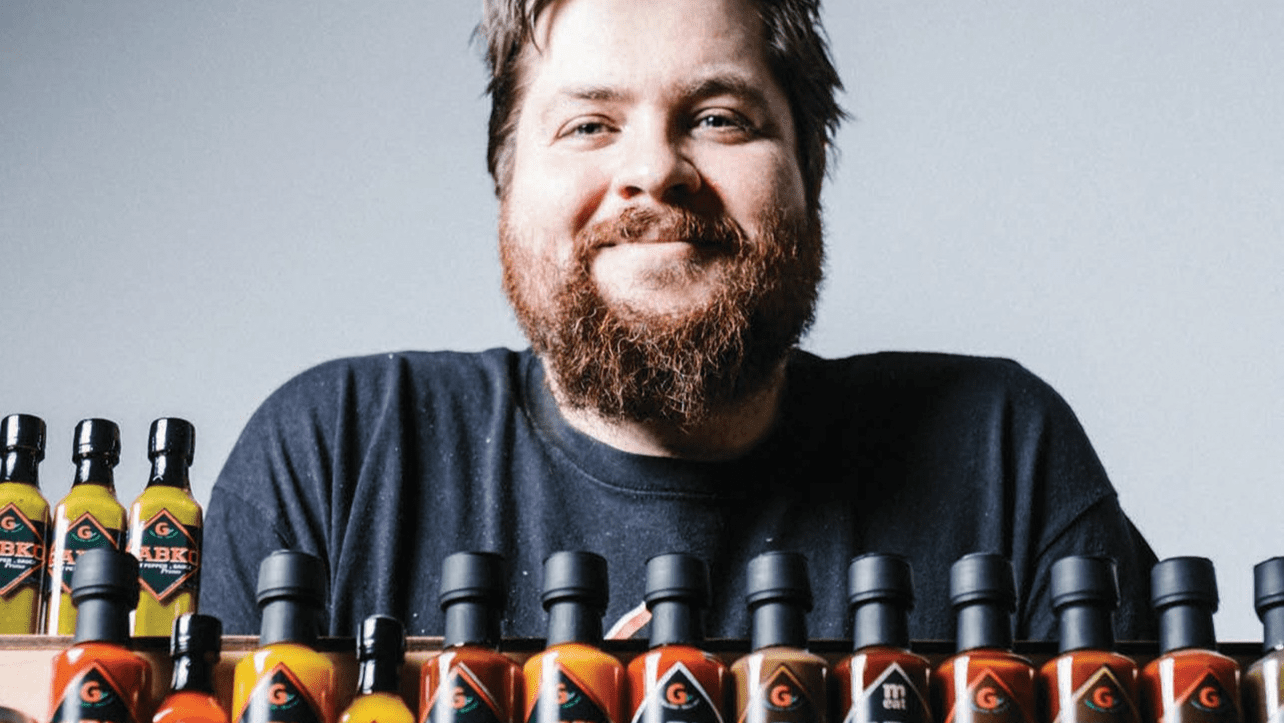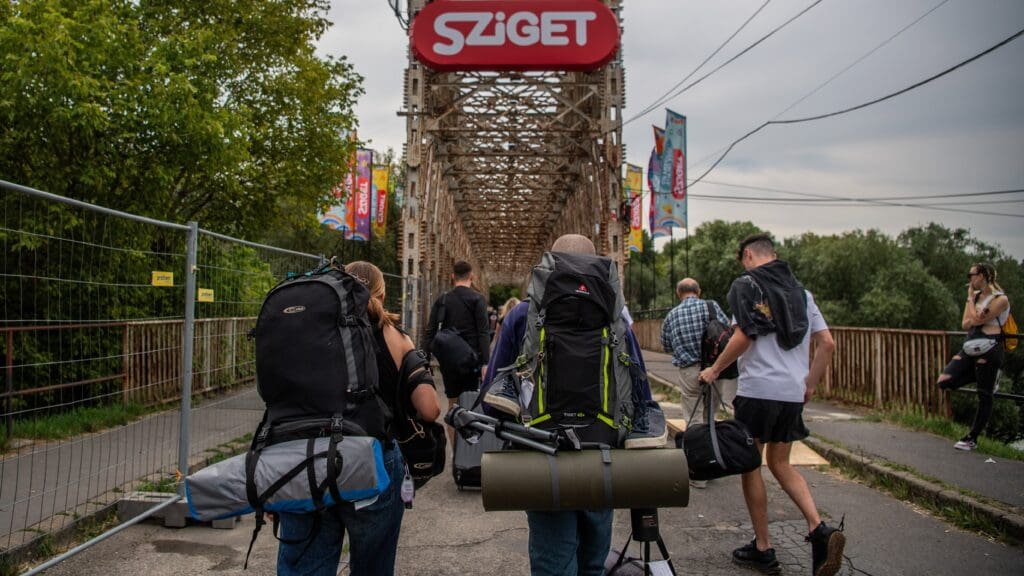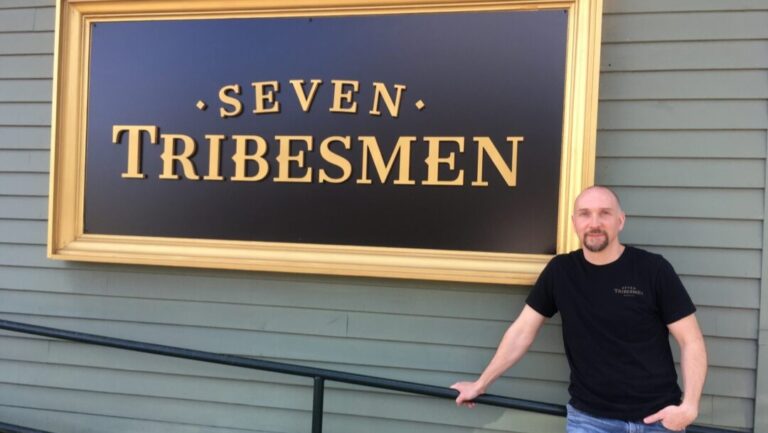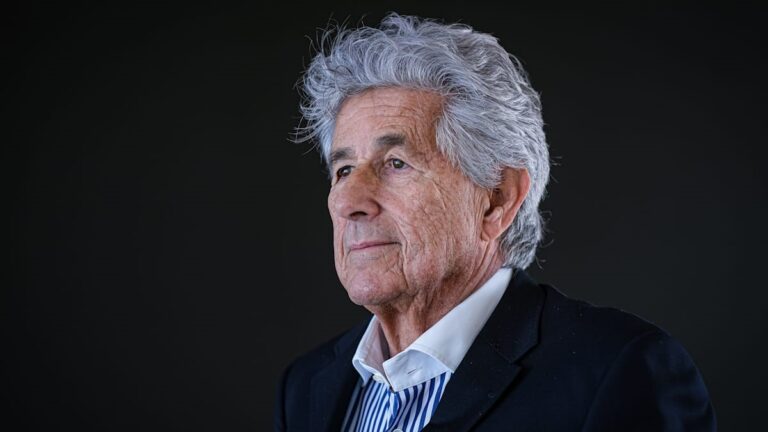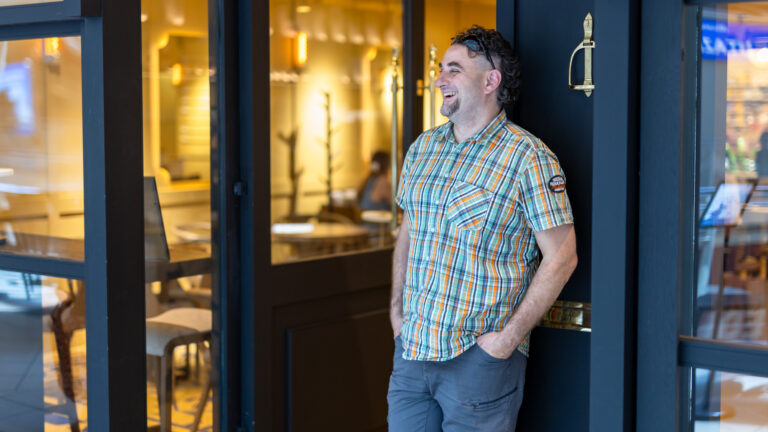This article by Zita Meszleny was originally published in the Hungarian Chronicle in 2021.
‘When I first tasted the chili sauce, two drops made my broth so hot that it was almost inedible. The lettering on the small red bottle—Gabko—burnt into my retina for good. It comes from the name of Gábor Nagy, who started to grow chili peppers ten years ago for fun, prompted by a habanero. The hobby turned into a vocation, and his artisan product has become an indispensable feature on the table—at home and in restaurants as well.’
***
After I tasted your chili, the question that emerged immediately after thinking of a glass of water was why it was worth producing a sauce so hot that a small bottle would last for years.
Our extra hot chili is indeed slow to move. Most people would come back for it after their neighbour borrows it or a friend insists on taking it saying he just have to have this thing himself. But for me it is enough if there is a single bottle in every family. It is a real pleasure for me when customers send pictures of their Christmas dinner or family gatherings showing Gabko on their tables. Since the whole business began as a hobby, it was not intended to become a high-turnover product. This was not the reason why I started it.
Why, then?
It was ten years ago when I first tasted a habanero pepper at a friend of mine’s place in Finland. He prepared an Indian dinner, used the pepper for it, and put the remainder on the table. When I tasted it, I was dumbfounded. I sweated until the morning, but I was absolutely convinced that I just needed this feeling. I needed that something extra in my food—and in my life. Chili is a bit like a drug: the more painful, the better.
A single pepper had such a strong effect on you?
Yes, because in Hungary ‘hot’ equalled Erős Pista back then. The trend of extra strong sauces appeared in the country with me once that experience forced me to relearn the concept of ‘hot’.
But we Hungarians are allegedly keen on hot and we can also take it.
Yes, we like it and we can also take it, but as I said, only on the level of Erős Pista. My red sauce is a hundred times stronger. Several hundreds of times, in fact. Many would approach my chili saying ‘come on, I am a peasants’ child coming from the Great Plain, I can take anything,’ and then they get a surprise. Food should be respected and appreciated. If you approach it this way, it will give you a lot of joy. I was also motivated by wanting the first experience to be repeated. Since there was no chance of achieving it in any other way, I had to do it myself to get it.
How did you start?
I took the stump of that habanero home from Finland as a souvenir. I was planning to put it into a pot. And that was what happened, but I also did some reading and saw that much stronger pepper varieties also existed. I was exhilarated to order a record-making package with seeds of the ten strongest chilies, ten of each. I potted thirty-five of them in the winter, assuming it should be enough for our own table. I was tending to them on the windowsill, but my calculation proved wrong. The seeds developed into two-meter-tall plants, and the geraniums were crowded out also on the balcony. I was singing to the plants, I really did everything to bring out the maximum from them, and they yielded several kilos each. But we did not need so much; one jarful would have been enough for me and my wife Vera for a full season. I did not know what to do with the remaining one hundred.
So you started to sell those?
At first I was only giving it away to friends and colleagues, and we also swapped it. We would go down to the market in Nagymaros with five bottles, and swap them for sausages and potatoes. But it soon turned out that I wasn’t the only one in this country who was missing this type of chili sauce. This is only a spice, really, as it does not add colour to your food, it doesn’t modify the flavour, it doesn’t have seeds, and it isn’t sweet. It simply makes your food taste stronger.
Did you have a past in gastronomy? Why was it so important for you to produce this spice?
I wanted to become a cook when I was a kid, but I turned to something completely different. I became a traffic engineer, and was working on public procurements at MÁV. But cooking was part of my life as a hobby, just like my band, or growing chilies.
How did the latter turn into a vocation?
Although we realized that we were able to sell the sauces, for a long time we were only working with the chili in our free time. We were growing plants with Vera in our backyard and on a friend’s land. We harvested, cooked, and packaged the stuff after work. Then, the story took a turn in 2017. That was the year when I sent my tequila jalapeño to the international Hot Pepper Awards in New York City where it was selected as the best in two categories. A three-week madness without sleep followed. We worked from six a.m. until six p.m., then from six p.m. we looked after the chili until 3 a.m., and started all over again the next morning. That was the point where I had to give up my secure job to go after my dream. But I already felt it would be my vocation, the real thing, and I would be sorry for the rest of my life if I didn’t do it.
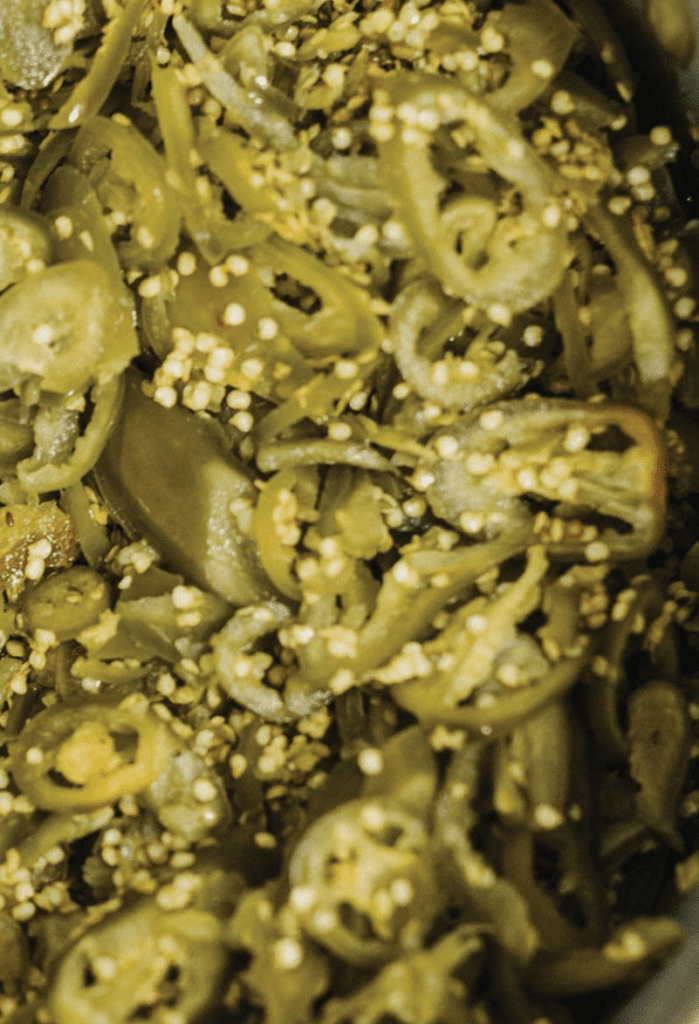
‘I need that something extra in my food— and in my life’
Pepper is hot due to its capsaicin content. The more the plant suffers, the more capsaicin it produces as a reaction. Those striving to break records literally torture their plants to achieve the desired effect, but growers like Gábor, who would like to harvest the real thing, carefully look after their crops.
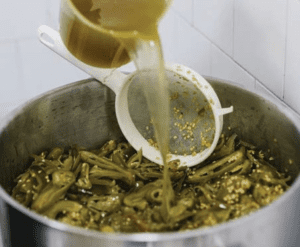
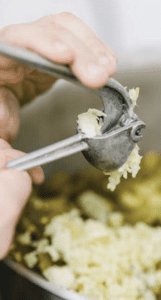
Wasn’t it difficult to start your own business after being an employee in an office for so long?
Although I liked the office and enjoyed the years I spent there, this is something else. Now I would not be able to go back any longer. I may have been pushing billions, it was just pushing buttons. I did not really see the added value in it, and I did not see myself in it. However, if I put a bottle of sauce on the table, I know it was me who planted the seeds, looked after the seedlings, watered them, and harvested them—that it was me who had done and made everything that went into the jar. It is an invaluable feeling that the work I do with my own hands, which is valuable for me, is also appreciated by other people, who are even willing to give money for it as an expression of their appreciation. I am not just a cog in the machine. If what I do is good, I get the pat on the back, and when I make a mistake, it’s me who suffers.
Was this why you gave your name to the product?
‘Gabko’ was my nickname in an internet game when I was a kid. I put it on the bottle as a joke, sort of, but by today it is used as a common term. I heard customers say they would ‘gabko the food’. I wouldn’t have thought a joke would turn into something like this. But whenever Gabko is mentioned, it’s me who is mentioned. Therefore, I try to produce the best I can. I would never put my name on a bottle if I can’t say, with a clear conscience, that my full knowledge is in it. I do insist on this.
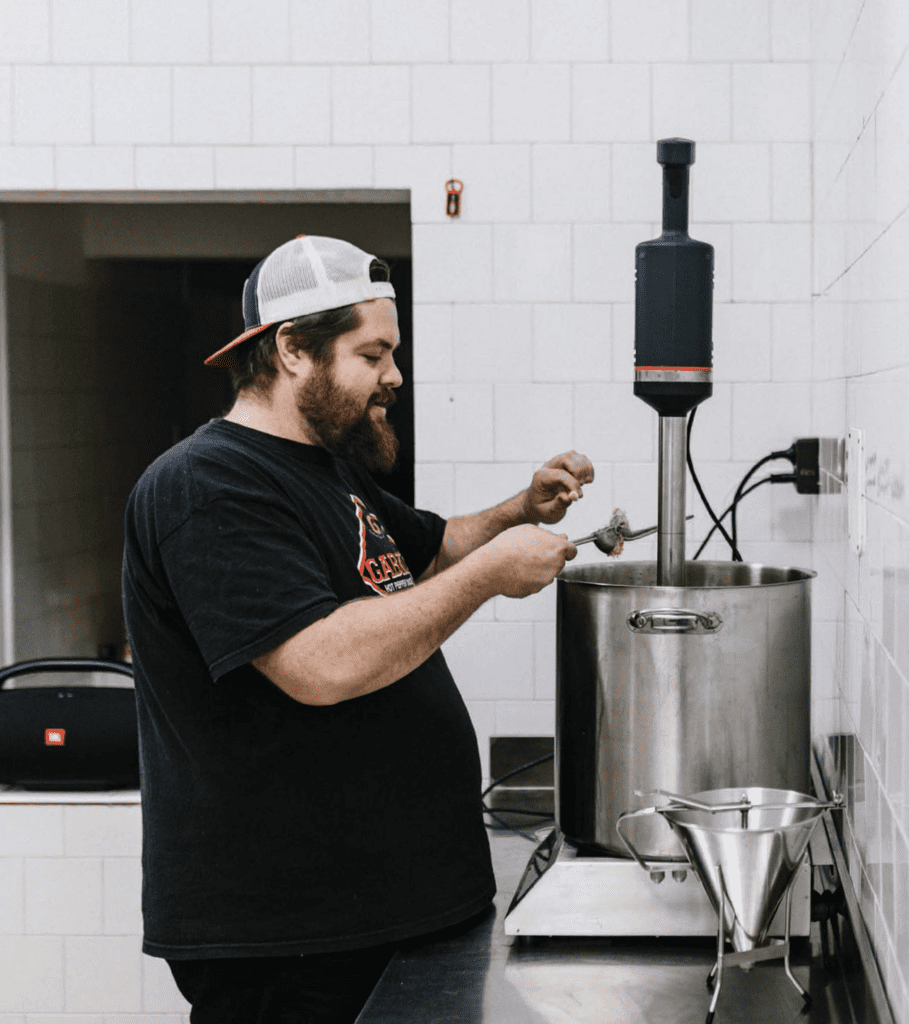
‘I would never put my name on a bottle if I can’t say, with a clear conscience, that my full knowledge is in it’
What is the main thing for a sauce like this? Material or method?
You can only make good things from good base materials. Therefore, we purchase new seeds from the official seed producer every year. We could get them for a lower price elsewhere, but then we would not know for sure whether we received pepper or something else; we could use our own, but we would run the risk of cross-pollination. This way I know: what is shown on the bottle is also what is inside. We meticulously check the crops we harvest, too. If the peppers are not perfect, I may pour two hundred kilos down the drain. I insist on top quality. This year it has also been like that. I do not overdo the base sauce any more, this is one of the key factors. I try to preserve the taste of the pepper as gently as possible, to maintain what it really is. We harvest from July to October, then I grind the peppers and store them in barrels with salt as the only preservative. Squeezing that will make the hottest sauce, without cooking or freezing, only letting it mature in barrels, like wine.
I saw you have a blog on chili-growing. Do many people turn to you for advice?
I have been writing my blog about the process since my first clumsy attempts. After a while I also set up a forum to ensure that the small circle of people who were interested in it have easy access to the necessary information. When I started growing, there were only foreign websites to check, and I wanted to provide a Hungarian source. A little community was soon organized around this hobby, and by now chili growing has evolved into something really trendy.
And that was why the Csípős Fesztivál [‘Hot Festival’] In Nagymaros was conceived?
No, we organized the festival every year over the period of the past eight years. Only a handful of growers came to the first festival, and the last one was attended by forty. Its program is closely tied to the farmers’ market in Nagymaros, another love affair. Many of the vendors join the party, selling their own hot products, hot beer, hot kürtőskalács [chimney cake], everything. We have had guests from as far afield as Szabadka.
Blog, market, festival… Do you mostly rely on personal presence?
The market is the basis, we are there every week, most of the time together with my wife and our children. We have a fixed stall, and customers do expect us to be there. I don’t want to let them down. In fact, the magic of handcrafted merchandise is in the encounters. The artisan really puts himself into what he makes, and customers would often make a purchase not only for the sake of the product, but rather because of the person behind it. My favourite story is that a couple ran out of their own wedding when they saw me selling at the market and wanted to have their pictures taken together with me. I still don’t know what to think of such moments, but to see that someone is so pleased by what I do is definitely worth all the effort.

